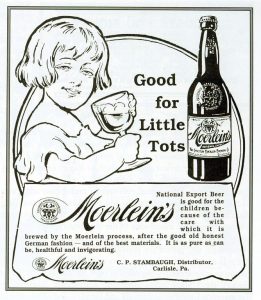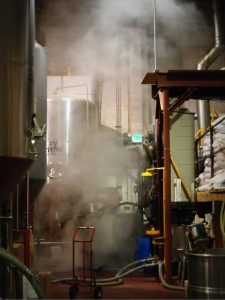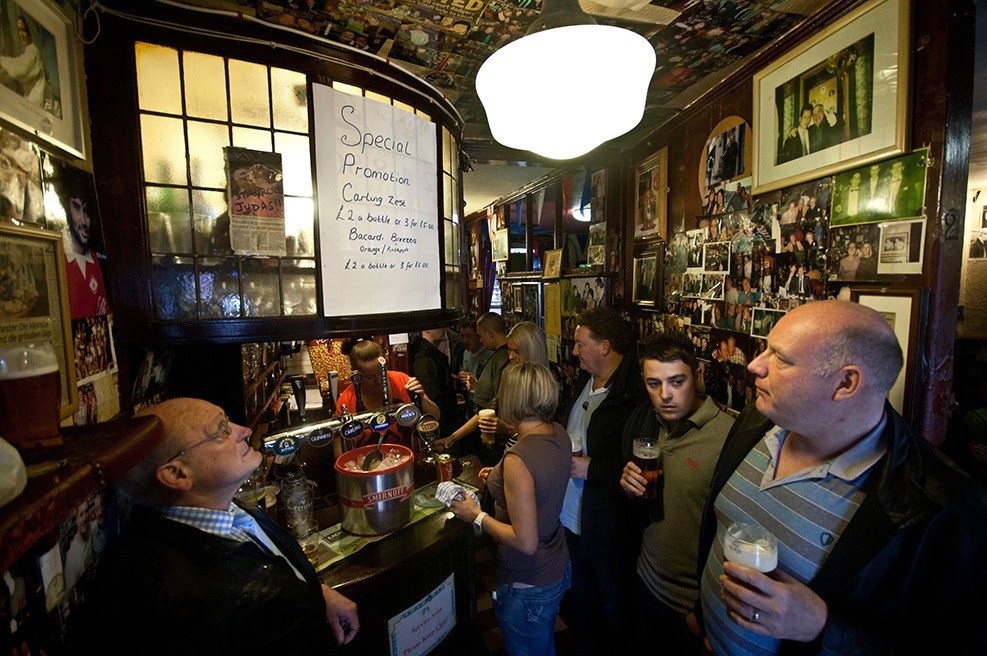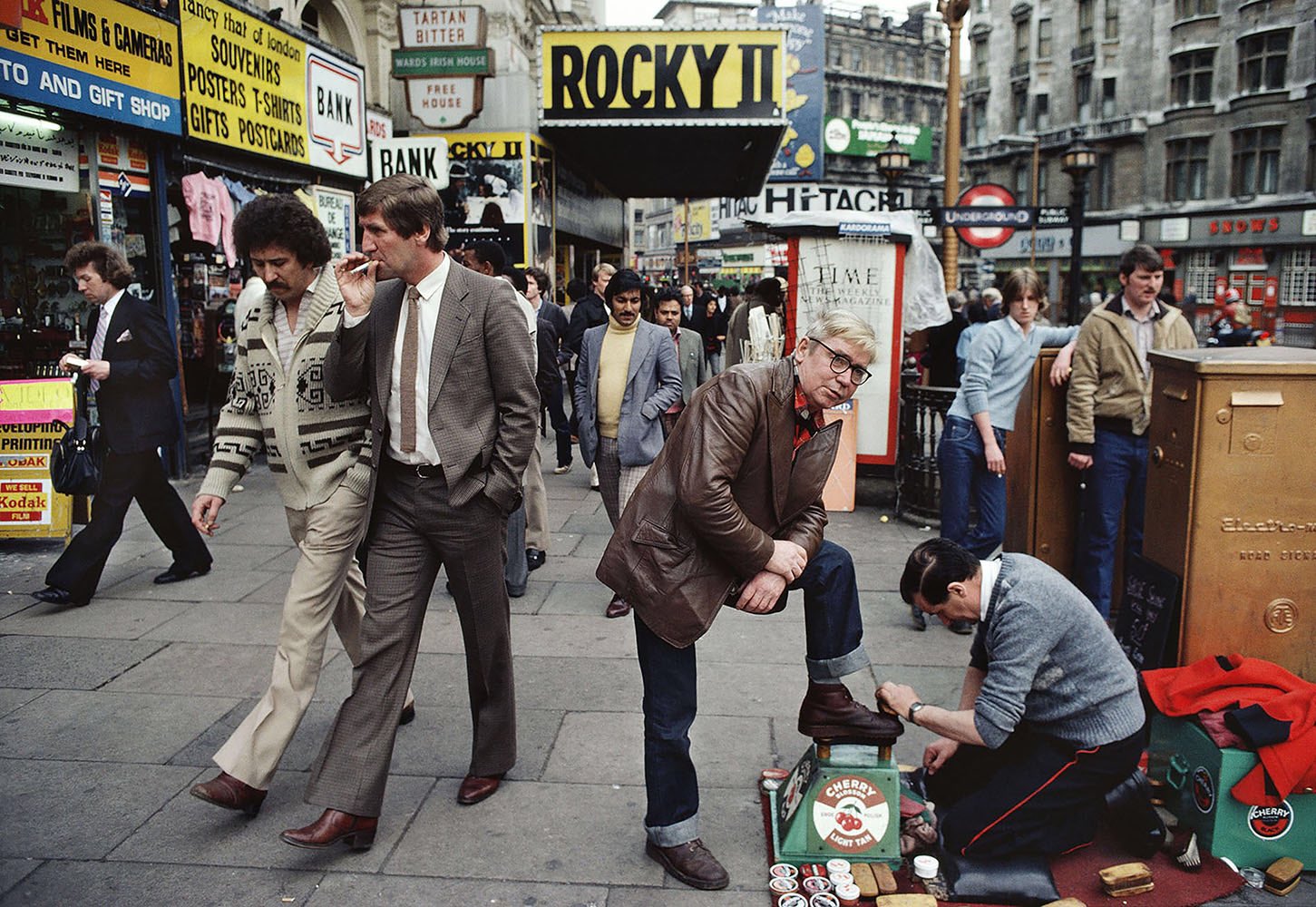What a week! And it’s not done yet. I’m working in isolation as many of you are while many others are not able to work. Here in Canada, a huge collective response is underway at the many levels of government and public compliance with sheltering in place is high. Neighbours are sharing with neighbours. It seems to be working well and I hope the same is true where you are. Well, working well for the most part:
P.E.I. farmer keeps social distance by hurling pork products to hungry customers.
People are finding out how to make do in the beer world. I get by with a bit of the old bunting when the sun shines. The Polk is out on the porch, too a sure sign of a Canadian spring. The BA is looking into supply chains. Some aren’t. Some places it is about bounced paycheques. Andy wrote about the scene as of Monday and it ain’t pretty in the world of NuKraft:
With tap rooms closed, thousands of breweries around the country no longer have a source of income. Most don’t have their own canning or bottling equipment. They don’t have relationships with distributors or bars, restaurants, or off-premise stores. They never saw the need to diversify their operations because nothing could ever shut off their money maker, the customer at their own bar.
 My favourite so far is (err… perhaps poorly) illustrated to the right, the Albany Pump Station driving around with a growler fill tap truck as Craig described:
My favourite so far is (err… perhaps poorly) illustrated to the right, the Albany Pump Station driving around with a growler fill tap truck as Craig described:
Does your brewer show up at your house, with a trailer full of beer and fill growlers for you at 9pm? Mine does. C.H. Evans Brewing Albany Pump Station a buzz tomorrow and ask if Sam will Santa Claus over to your house tomorrow! $10 crowlers (or 3 for $20)!
In Ireland, an extra-legal approach to keeping the taps flowing has lead to a stern warning:
Publicans who have opened despite the Government’s direction that they close for two weeks due to the coronavirus pandemic have not only put the wider public at serious risk, they have also put their licences and livelihoods on the line, one of the State’s leading barristers has warned. Senior Counsel Constance Cassidy who specialises in liquor licence applications, told The Irish Times that although the closure guidelines issued last week “are merely directory in nature until specific regulatory legislation is introduced”, publicans have been ignoring them at their peril.
In my own town, newly opened Daft Brewing has, a bit by luck, joined the ranks of those making hand sans-a-hizer:
The company’s new-found ability to make the increasingly scarce hand sanitizer hinged on a decision to buy a 200-litre still from China. “At the time we were thinking we couldn’t get this cheaper and with free shipping, so we just bought it for future use,” Rondeau said. “We had no plans to use it. We’re not a distillery. We just had it sitting in storage.” Skip ahead to three days ago, after hearing about how distillers were switching production to hand sanitizer, and the company’s employees dragged the still out of storage.
The UK’s mass watering hole chain Wetherspoons appears to be rushing to the bottom according to Rog the Protz:
Just in case any of you were thinking the #TimMartin #Wetherspoons fiasco couldn’t get any worse (keep my businesses open no risk in pubs, laying off staff without pay “go & get a job in Tesco”) he’s now written to out of pocket suppliers they must wait at his pleasure to be paid
And just like that, the pure power of Protz proves its potency as the hairy dimwit running the place does a 180. Good news for the staff.
Next, a bit of history was made this week as Martyn wrote the tale of a very early and not much good porter brewery in the US state of Virginia – which might be the first but is certainly the earliest example so far of porter brewing on this side of the Atlantic*:
In 1766 the brewery made 550 bushels of malt, but the quality of much of the beer and ale produced was poor. Mercer wrote to his eldest son George that “Wales complains of my Overseer & says that he is obliged to wait for barley, coals & other things that are wanted which, if timely supplied with he could with six men & a boy manufacture 250 bushels a week which would clear £200 … My Overseer is a very good one & I believe as a planter equal to any in Virginia but you are sensible few planters are good farmers and barley is a farmer’s article.”
And Boak and Bailey have posted about one of my favourite forms of Victorian writing, the recollection of how things were in youth, that leads them on a chase for the meaning of Kennett Ale:
The novelist and historian Walter Besant’s 1888 book Fifty Years Ago is an attempt to record the details of life in England in the 1830s, including pubs and beer. Of course this doesn’t count as a primary source, even if 1888 is closer to 1838 than 2020. Besant was himself born in 1836 and the book seems laced with rosy nostalgia – a counterpoint, at least, to contemporary sources whose detail is distorted by temperance mania…
These sorts of writings were very handy as part of the patching together of the 1800s tales of Albany Ale and Cream Beer. I trust them as recollections in the way one trust evidence in a court proceeding. Something to build upon.
In the category of upside effect of pandemic, ATJ had dusted off Called to the Bar and is getting back in the blogging game as part of his isolation skills development program. His first new post was about his experience of “PSS” – pub separation syndrome:
Where shall I wander when I’m told if I’m old and need to be at home? At what shall I wonder if I cannot stroll alone? The cities and towns in which I clowned but also frowned and then classed glasses of brown, gold and amber beers with varying degrees of hwyl are closed to me for now.
And Jeffery John himself has fired up the coal-fed servers and has Stonch’s Beer Blog running again:
Day one of being a pub landlord on Coronavirus lockdown: mothball the cellar; thoroughly clean lines; switch off all non-essential equipment.
Day two: turn the remote cooler back on again; connect a keg up to *just one* line for personal consumption.
Day three: get the ice machine going for 5pm G&Ts; decide it’s reasonable to have one IPA line and one lager line in operation for me and my cabin-mate.
JC’s Beer Blog is also revived. Any others? We need to recall that blogging was one way that we got through the immediate aftermath of 9/11. It’s good to write.
In the world of not-beer, another positive out of the lock down of the planet appears to be the delay in releasing the next vintage of Bordeaux so that it will be first reviewing from the bottle not the cask:
Normally, tastings for the new vintage would take place at the end of this month and early April. Scores and reports would emerge at the end of April and into early May and the first wines, bar the odd wild outlier, would start to trickle out in late May with trading properly happening in June and all wrapped up by July. All in all you have five months of Bordeaux-focused discussion and selling, something entirely unique in the world of fine wine. It’s no wonder it causes such jealousy. In a normal world the Bordelais would not want to release the 2019 wines until the trade has tasted them and formulated an opinion but when can this happen? France is currently in lockdown and the UK is rapidly following suit. When exactly both countries – and indeed other western countries that constitute en primeur’s primary markets – will be fully released from this limbo is unclear at present.
Remember – even in these troubled times, there is more beer news every week with Boak and Bailey most Saturdays, plus more at the OCBG Podcast on Tuesdays and sometimes on a Friday posts at The Fizz as well. And sign up for Katie’s weekly newsletter, too. There’s the AfroBeerChick podcast now as well! Plus the venerable Full Pint podcast. And Fermentation Radio with Emma Inch. Check them out. Hunker down. You got this.
*Must check on this. A rogue porter brewery in Newfoundland would not surprise me if it were not for their happy habit from the 1500s on of importing all the good stuff they need.



 Go. Go put on your 45 of Don McLean singing “American Pie,” his lament for the milestones marking the ends of innocence during the first two decades of the rock ‘n’ roll era. Go put it on and have have a good cry because that’s sorta what happened this week. BeerAdvocate got
Go. Go put on your 45 of Don McLean singing “American Pie,” his lament for the milestones marking the ends of innocence during the first two decades of the rock ‘n’ roll era. Go put it on and have have a good cry because that’s sorta what happened this week. BeerAdvocate got  It’s a funny time of the seasons. Photos on social media from the mid-Atlantic and southern England definitely look like spring to me but it’s going to top out at -15C here on Friday. One last kick from the angry gods, just the one I hope. Hope. Oh… and just don’t fall for the matchy matchy beer and candy
It’s a funny time of the seasons. Photos on social media from the mid-Atlantic and southern England definitely look like spring to me but it’s going to top out at -15C here on Friday. One last kick from the angry gods, just the one I hope. Hope. Oh… and just don’t fall for the matchy matchy beer and candy  Yuletide. Its been busy so far this month but after one last late evening meeting for work tonight I think I might be sliding into Yule proper. As I mentioned a few weeks ago, the days of the Christmas Yuletide Hogmanay Kwanzaa and Hanukkah Beery photo contest may be well past us but the archives go on and on. To the left is
Yuletide. Its been busy so far this month but after one last late evening meeting for work tonight I think I might be sliding into Yule proper. As I mentioned a few weeks ago, the days of the Christmas Yuletide Hogmanay Kwanzaa and Hanukkah Beery photo contest may be well past us but the archives go on and on. To the left is 




 The last of birthdays, anniversaries and public holidays over the last four weeks has finally passed. And it has snowed. Wednesday was as sharp as deepest January at -16C even if it was +8C last Saturday. Five weeks before the solstice. So, I am buried in wool blankets at home this week, covered as soon as I get through the door, hugging the wood burning internet server looking for answers. Which is where I found the image above, from 1979 when
The last of birthdays, anniversaries and public holidays over the last four weeks has finally passed. And it has snowed. Wednesday was as sharp as deepest January at -16C even if it was +8C last Saturday. Five weeks before the solstice. So, I am buried in wool blankets at home this week, covered as soon as I get through the door, hugging the wood burning internet server looking for answers. Which is where I found the image above, from 1979 when  Perhaps somewhere in the middle, Boris Johnson has apparently failed to keep his word, this time related to staying out of the pub until Brexit is
Perhaps somewhere in the middle, Boris Johnson has apparently failed to keep his word, this time related to staying out of the pub until Brexit is 